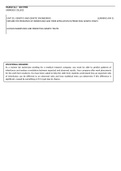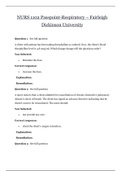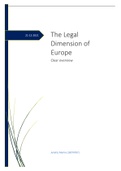Essay
LEARNING AIM C: EXPLORE THE PRINCIPLES OF INHERITANCE AND THEIR APPLICATION IN PREDICTING GENETIC TRAITS
- Institution
- PEARSON (PEARSON)
This assignment and unit are overall awarded a distinction. This is Assignment C of Unit 11 and will talk about human inheritance and predicting genetic traits. In this assignment I have given examples of Mendles pea plants, explained F1 and F2 generation, and carried out and investigate Dihybrid a...
[Show more]






